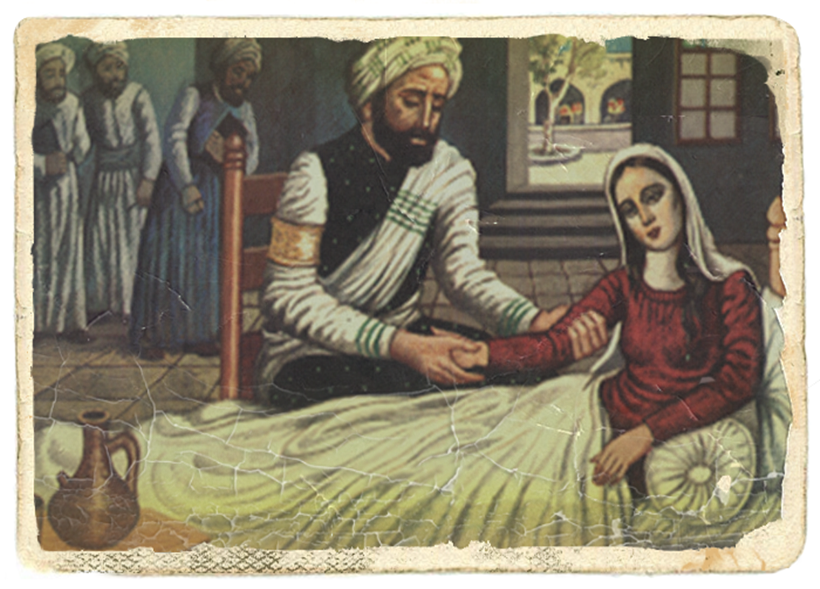Fri 24 April 2020:
Ibn al Jazzar, a 10th-century Muslim polymath, was the first to diagnose leprosy, explaining the disease in scientific terms and measures to contain it.
Common knowledge says that Norwegian physician Gerhard Armauer Hansen was the first to identify leprosy’s main cause in 1973, but it was Al Jazzar who identified the disease in his books named ‘Zad El Mousa Firwa’ and ‘Qaout el Hadhir’ (‘Provision for the traveller’ and ‘The Day’s Subsistence’). Constantinus Africanus, the 11th-century physician who spent the first half of his life in Africa and the rest in Italy, translated Jazzar’s books without naming the author, under the title ‘Viaticum’, which eventually played an influential role in shaping the medical renaissance of Europe.
Although leprosy is no longer an incurable disease, there are reportedly two million people currently suffering from it in the world. During the Crusades, leprosy was at its peak, destroying millions of lives throughout the Middle Ages. It was considered to be one of the worst diseases of that time.
Historians trace leprosy’s history back to the First Age, with it found on Egyptian cartonnage, a material used in funerary masks. Its first traces were found in India, South-China and Mesopotamia. Before CE, doctors of Alexander the Great started observing it and called leprosy ‘elephantiasis’ because of its reaction on the skin but they were not able to separate it from other skin diseases because of leprosy’s unknown character.
While Ibn al Jazzar, Ibn Sina and several Islamic polymaths were diagnosing it as a disease by explaining its main symptoms, European communities were outcasting people infected with leprosy as they believed that it was the wrath of Allah (God) until the 15th Century.
The first idea of diagnosing leprosy as a disease in Europe was at the beginning of the 15th Century in 1403 in Venice. Before this date, people with the disease lost all their wealth in addition to their health as they were cast out from society, they were not allowed to enter public places and it was stipulated for them to ring a bell to keep healthy people away from them.
According to some sources, there were more than 2,000 jails in France for leprosy patients while the number was more than 19,000 across the Christian world until the spread of the disease slowed down at the end of 15th Century.
The Origins
Born in Kairouan, modern-day Tunisia, at the end of the 9th Century or possibly the beginning of the 10th Century, Ibn al Jazzar’s father and uncle were physicians from whom he learned medicine with additional expertise in history, theology, grammar he learned during his youth. Ibn al Jazzar is also known in Europe by the Latinised name Algizar.
His full name was Ahmed Ben Jaafar Ben Brahim Ibn al Jazzar, and contrary to his era’s tradition of outcasting leprosy patients, he was trying to treat them. During his efforts to treat the disease, he wrote all the details on antelope leather along with all the diseases he encountered during his travels. Some sources claim that Ibn Al Jazzar had a library rich of 25 quintals (a historic unit of mass).
Ibn al Jazzar gathered all his unique information during the treatment process of his patients in his famous book ‘Zad Al Mussafir’ (‘The Viaticum’) which was translated into Latin, Greek and Hebrew and it was copied, recopied, and printed in France and Italy in the 16th Century.
The Muslim polymath broke new ground with his book of ‘Zad Al Mussafir’, based on his experiences with his treatments during his travels, he explained the reason for leprosy and its treatments in this book. The book was also adopted and popularised across Europe and became a cornerstone for Europe’s classical medicine education. The book was also a compilation of Ibn Sina’s (also known as Avicenna) ‘The Canon of Medicine’.
In the book, he names the disease, lists the known symptoms, gives the treatment and sometimes indicates the prognosis. He often cited in reference the names of foreign authors, as if to give importance to his subject, or for intellectual integrity.
He also wrote books on geriatric medicine and health of elderly, sleep disorders, forgetfulness and how to strengthen memory, a treatise on causes of mortality in paediatrics, fevers, sexual disorders, medicine of the poor, therapeutics, coryza, stomach disorders, leprosy, separate drugs, compound drugs, and this is in addition to his books in other areas of science, history, animals and literature.
Some Islamic sources claim that he passed away in 1009 while some believe it was at the end of the 970s.
Think your friends would be interested? Share this story!





